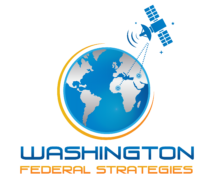From the Federal Register

For decades, the United States has effectively reaped the benefits of operating in space to enhance our national security, civil, and commercial sectors. Our society now depends on space technologies and space-based capabilities for communications, navigation, weather forecasting, and much more. Given the significance of space activities, the United States considers the continued unfettered access to and freedom to operate in space of vital interest to advance the security, economic prosperity, and scientific knowledge of the Nation.
Today, space is becoming increasingly congested and contested, and that trend presents challenges for the safety, stability, and sustainability of U.S. space operations. Already, the Department of Defense (DoD) tracks over 20,000 objects in space, and that number will increase dramatically as new, more capable sensors come online and are able to detect smaller objects. DoD publishes a catalog of space objects and makes notifications of potential conjunctions (that is, two or more objects coming together at the same or nearly the same point in time and space). As the number of space objects increases, however, this limited traffic management activity and architecture will become inadequate. At the same time, the contested nature of space is increasing the demand for DoD focus on protecting and defending U.S. space assets and interests.
The future space operating environment will also be shaped by a significant increase in the volume and diversity of commercial activity in space. Emerging commercial ventures such as satellite servicing, debris removal, in-space manufacturing, and tourism, as well as new technologies enabling small satellites and very large constellations of satellites, are increasingly outpacing efforts to develop and implement government policies and processes to address these new activities.
To maintain U.S. leadership in space, we must develop a new approach to space traffic management (STM) that addresses current and future operational risks. This new approach must set priorities for space situational awareness (SSA) and STM innovation in science and technology (S&T), incorporate national security considerations, encourage growth of the U.S. commercial space sector, establish an updated STM architecture, and promote space safety standards and best practices across the international community.
The United States recognizes that spaceflight safety is a global challenge and will continue to encourage safe and responsible behavior in space while emphasizing the need for international transparency and STM data sharing. Through this national policy for STM and other national space strategies and policies, the United States will enhance safety and ensure continued leadership, preeminence, and freedom of action in space.
The Above is a Memorandum
Shared between the US National Vice President, Secretary of State,
Secretary of Defense, Secretary of Commerce, Secretary of
Transportation, Secretary of Homeland Security, Director of
National Intelligence, Director of the Office of Management and
Budget, Assistant to the President for National Security Affairs,
Administrator of the National Aeronautics and Space
Administration, Director of the Office of Science and Technology
Policy, Deputy Assistant to the President for Homeland Security
and Counterterrorism, Chairman of the Joint Chiefs of Staff
